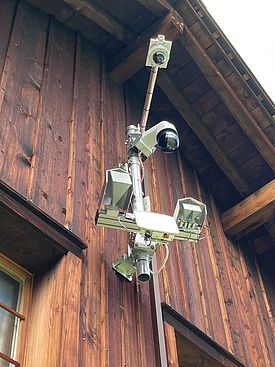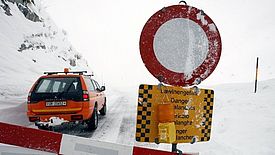The most important organisational or temporary avalanche protection measures are warning, closure, evacuation and the artificial triggering of avalanches. They are used at short notice if the current avalanche situation requires it. Automatic avalanche detection systems are also becoming increasingly important.
If residential areas, ski resorts or transport routes are at acute risk of avalanches, the local safety services can issue warnings, closures or evacuations. Based on the current weather and avalanche situation, they estimate the possible size and probability of avalanches and decide on the measures to be taken. Safety concepts summarise procedures such as assessing the current avalanche situation, implementing closures and documenting avalanches. Intervention maps can be used by management teams to prepare their response to an event.

Temporary measures are used in particular when the financial resources for permanent protection measures are too scarce or these measures are not cost-effective. Furthermore, they can often avoid major interventions in nature. They can also be realised quickly, which can be relevant in the event of unforeseen events. A number of automatic avalanche detection systems have been installed in Switzerland in recent years. This means that avalanches can be detected even in poor weather conditions. An alarm system can detect an avalanche directly using radar or geophones. A warning system that couples an alarm system with light signals can automatically trigger the closure of a traffic route.
